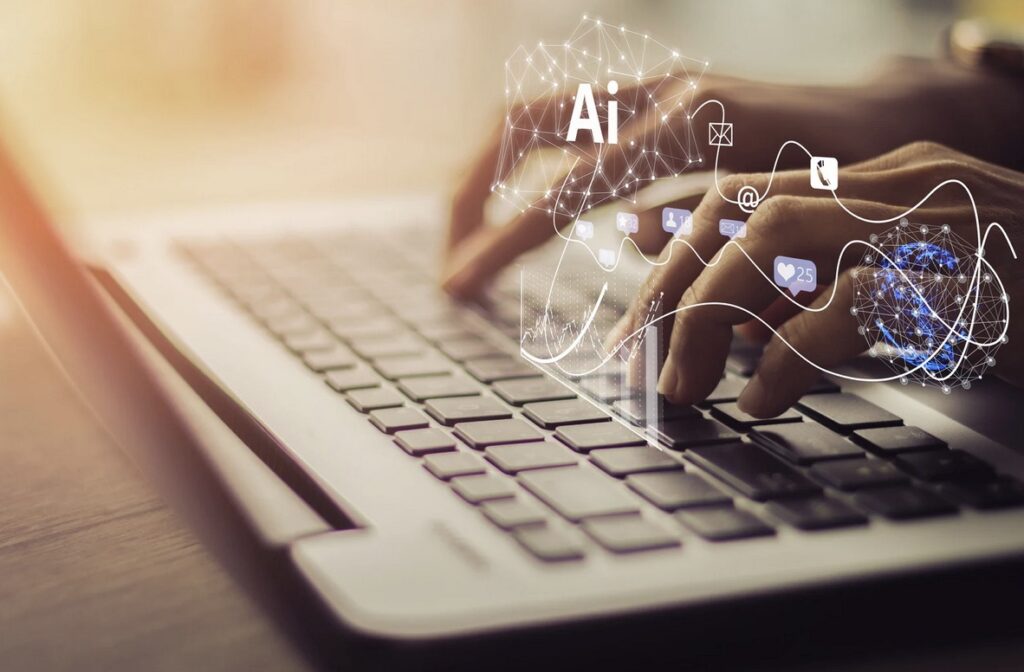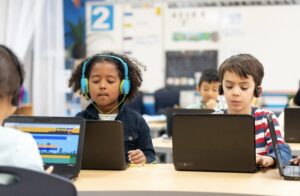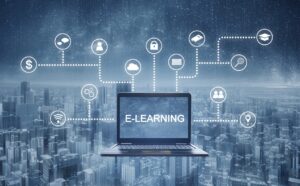Trends in Educational Technology
From virtual classrooms to AI-driven personalized learning, these advancements are not just trends, but the future of education. They’re reshaping the way educators teach and learners acquire knowledge. So, let’s dive into the world of edtech and explore these exciting changes together.
Keeping pace with advancements, the educational technology landscape continues to evolve rapidly. In the section below, we explore two significant trends shaping the future of education.
Blended learning models, combining traditional classroom teaching with online learning, emerge as a standout trend. Combining face-to-face instruction and online learning, they offer the best of both worlds. For instance, educators could impart core learning in a physical setting, and use online tools to provide remedial or enrichment activities.
Growth of Virtual Classrooms
Another significant trend shaping the future of education is the extensive growth of virtual classrooms. A virtual classroom is basically an online learning environment that allows for live interaction between the teacher and students as it happens in a traditional classroom.

Brought to the fore largely by the COVID-19 pandemic, many schools and educational institutions realized the viability of virtual classrooms to keep the wheels of education turning amidst challenging circumstances. As per the E-Learning Market Trends and Forecast 2021 – 2026 report, the global e-Learning market is expected to reach around $375 billion by 2026, indicative of the widespread adoption of virtual classrooms.
Dense in innovative features such as live chats, interactive whiteboards and real-time feedback, virtual classrooms provide an engaging learning environment, ensuring education isn’t confined to the physical boundaries of a traditional classroom anymore.
Impact of Artificial Intelligence on Education
AI-driven Personalized Learning
AI’s application enhances the learning experience by enabling personalized instruction, deepening student understanding, and increasing engagement. Machine learning algorithms analyze students’ learning patterns, preferences, and performance, facilitating a tailored educational approach. For instance, intelligent tutoring systems adapt to learners’ needs, offering customized problem sets and immediate feedback. Thereby, AI helps in fostering a sense of competence and stimulating motivation among students, accelerating their learning pace and improving results. Gear up for an education paradigm shift with AI, the harbinger of a personalized learning era.
Automation of Administrative Tasks

AI has come as a boon for educators and institutions through automation of tedious administrative tasks. It streamlines time-consuming operations, such as grading assignments and tracking student attendance, providing teachers with more time to focus on instruction and student interaction.
For instance, intelligent systems process student data, automatically generating reports and identifying trends that help education providers make informed decisions. By automating administrative tasks, AI contributes to a more efficient and effective educational environment, ensuring all stakeholders reap the manifold benefits.
Challenges Facing Educational Technology
Despite the promising advancements made in educational technology, there remain several significant challenges that require attention. These challenges primarily revolve around accessibility and equity issues, as well as data privacy concerns. It is crucial to shed light on these challenges to ensure the use of technological advances benefits every learner.
Accessibility and Equity Issues
Educational technology’s rise highlights existing inequities and raises concerns about accessibility. Not all students have equal access to the technology needed to fully participate in a digital learning environment. For example, a 2019 study by Microsoft showed that over 160 million American students and teachers lacked broadband access needed for online learning.

This digital divide worsens existing educational disparities among different socioeconomic, racial, and geographic populations.
Equity in education also refers to meeting diverse learning needs. True equity includes not just equal access, but also the provision of tools and technologies tailored to students’ unique learning needs.
Assistive technologies, for instance, are a crucial component of this approach, catering to students with disabilities. However, more work is needed to ensure that all types of learners can effectively use educational technology, amplifying the challenge of accessibility and equity.
Data Privacy Concerns
As schools increasingly incorporate digital tools into their teaching, new concerns arise around data privacy. These technologies often require the collection of personal information from students, raising potential privacy issues. Students and teachers alike are at risk when it comes to data security and privacy on these platforms.
In a world where data privacy is increasingly scrutinized, it is crucial for educational institutions and technology providers to prioritize privacy to foster trust and ensure the safety of student and teacher data. This includes adopting transparent data collection and usage policies, implementing robust security measures, and providing comprehensive user education about data privacy. The sustainability and success of educational technology hinge on adequately addressing these data privacy concerns.

